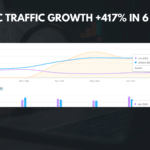|
Getting your Trinity Audio player ready... |
Audio is a powerful tool that can greatly enhance your Google Slides presentations. By incorporating audio, you can create a more engaging and memorable experience for your audience. Whether you are giving a business presentation, an educational lecture, or a creative pitch, adding audio can help you effectively convey your message and captivate your audience.
Key Takeaways
- Adding audio to your Google Slides presentations can enhance engagement and retention for your audience.
- You can add various types of audio, including voiceovers, sound effects, and music, to your Google Slides presentations.
- Recording and inserting audio in Google Slides is a simple process that can be done directly within the presentation.
- To create high-quality audio, use a quiet recording environment, a good microphone, and practice speaking clearly and confidently.
- Editing and adjusting audio in Google Slides allows you to trim, fade, and adjust the volume of your audio clips.
Benefits of Adding Audio to Your Google Slides Presentations
There are several benefits to incorporating audio into your Google Slides presentations. First and foremost, audio can improve engagement and retention. When you combine visual and auditory stimuli, you create a multi-sensory experience that is more likely to capture and hold your audience’s attention. By adding audio cues or narration, you can guide your audience through your presentation and ensure that they understand and remember the key points.
In addition to improved engagement, audio can also enhance storytelling in your presentations. By using sound effects or background music, you can create a more immersive experience for your audience. For example, if you are presenting a travel destination, you can add audio of waves crashing on the shore or birds chirping in the background to transport your audience to that location.
Another important benefit of adding audio is increased accessibility for visually impaired audiences. By providing audio descriptions or voiceovers, you can make your presentations more inclusive and ensure that everyone can access the information you are sharing.
Lastly, incorporating audio into your Google Slides presentations can add a level of professionalism and creativity. It shows that you have put thought and effort into creating an engaging and dynamic presentation.
Types of Audio You Can Add to Your Google Slides Presentations
There are several types of audio that you can add to your Google Slides presentations:
- Voiceovers: Voiceovers are recordings of spoken narration that accompany your slides. They can be used to provide additional information or explanations, or to guide your audience through the presentation.
- Sound effects: Sound effects can be used to add emphasis or create a specific atmosphere in your presentation. For example, you can add a “ding” sound effect when a key point is made, or a “thunder” sound effect to create suspense.
Music: Background music can be used to set the mood or tone of your presentation. It can help create a more immersive experience for your audience and make your presentation more memorable.
Recordings of live presentations: If you have recorded a live presentation, you can add the audio recording to your Google Slides presentation. This can be useful if you want to share a past presentation with a wider audience or if you want to review and improve your own presentation skills.
How to Record and Insert Audio in Google Slides Presentations
| Metrics | Description |
|---|---|
| Recording Audio | Ability to record audio directly within Google Slides presentations |
| Inserting Audio | Ability to insert audio files into Google Slides presentations |
| Supported Audio Formats | Google Slides supports MP3 and WAV audio file formats |
| Audio Playback | Ability to play audio files within Google Slides presentations |
| Audio Editing | Basic audio editing features such as trimming and adjusting volume |
| Audio Quality | Google Slides supports high-quality audio playback up to 320 kbps |
Recording and inserting audio in Google Slides is a straightforward process. Here is a step-by-step guide:
- Open your Google Slides presentation and go to the slide where you want to add audio.
- Click on the “Insert” tab in the top menu bar.
- Select “Audio” from the drop-down menu.
- A sidebar will appear on the right side of the screen. Click on the “Record” button to start recording your audio.
- Speak into your microphone to record your narration or sound effect.
- Click on the “Stop” button when you are finished recording.
- You can preview your recording by clicking on the play button.
- If you are satisfied with the recording, click on the “Insert” button to add it to your slide.
Tips for ensuring high-quality audio:
- Use a good quality microphone: Investing in a good quality microphone can greatly improve the sound quality of your recordings.
- Find a quiet recording environment: Choose a quiet room or use soundproofing materials to minimize background noise.
- Script and rehearse your audio: Prepare a script for your narration or sound effect and practice it before recording.
- Edit and enhance your audio: Use audio editing software to clean up any background noise or enhance the sound quality of your recordings.
Tips for Creating High-Quality Audio for Your Google Slides Presentations
Creating high-quality audio for your Google Slides presentations is essential to ensure that your message is effectively conveyed. Here are some tips to help you create professional-sounding audio:
- Choosing the right equipment: Invest in a good quality microphone that suits your needs. USB microphones are a popular choice for recording narration, while condenser microphones are often used for recording music or sound effects.
Creating a quiet recording environment: Find a quiet room or use soundproofing materials to minimize background noise. Turn off any fans, air conditioners, or other sources of noise that could interfere with your recording.
Scripting and rehearsing your audio: Before recording, prepare a script for your narration or sound effect. Practice reading the script aloud to ensure that you are comfortable with the content and the timing.
Editing and enhancing your audio: After recording, use audio editing software to clean up any background noise or enhance the sound quality of your recordings. You can adjust the volume levels, remove unwanted noise, and add effects to improve the overall sound.
Editing and Adjusting Audio in Google Slides Presentations

Google Slides provides several audio editing tools that allow you to adjust and enhance your audio recordings. Here are some tips for using these tools effectively:
- Adjusting volume: You can adjust the volume of your audio by clicking on the audio icon on your slide and using the volume slider in the toolbar that appears. This allows you to make sure that your audio is loud enough to be heard, but not too loud that it becomes distracting.
Trimming audio: If you have recorded a longer audio clip and only want to use a specific portion of it, you can trim the audio in Google Slides. Click on the audio icon on your slide, then click on the “Format options” button in the toolbar that appears. In the sidebar that opens, you can adjust the start and end times of your audio clip.
Looping audio: If you want your audio to play continuously throughout your slide or presentation, you can enable the loop option. Click on the audio icon on your slide, then click on the “Format options” button in the toolbar that appears. In the sidebar that opens, check the box next to “Loop until stopped”.
Adding Background Music to Your Google Slides Presentations
Adding background music to your Google Slides presentations can greatly enhance the overall experience for your audience. Here are some benefits of using background music:
- Setting the mood: Background music can help set the mood or tone of your presentation. For example, if you are giving a presentation about a relaxing spa retreat, you can add soft and soothing music to create a calm and peaceful atmosphere.
Creating a more immersive experience: Background music can make your presentation more engaging and memorable. It can help transport your audience to a specific time or place and make them feel more connected to your message.
Adding professionalism: By adding background music, you can add a level of professionalism to your presentation. It shows that you have put thought and effort into creating a polished and well-rounded presentation.
To find and add royalty-free music to your presentation, you can use websites such as YouTube Audio Library, Free Music Archive, or SoundCloud. These websites offer a wide range of music tracks that are free to use for non-commercial purposes.
Using Audio to Enhance Your Google Slides Presentations
Audio can be used to enhance different types of presentations, including educational, business, and creative presentations.
In educational presentations, audio can be used to provide additional explanations or examples. For example, if you are teaching a foreign language, you can add audio clips of native speakers pronouncing words or phrases to help your students improve their pronunciation.
In business presentations, audio can be used to add emphasis or create a more engaging experience. For example, if you are presenting sales data, you can add audio cues or sound effects to highlight key points or trends.
In creative presentations, audio can be used to create a specific atmosphere or evoke emotions. For example, if you are presenting a photography portfolio, you can add background music that complements the mood of your images.
Best Practices for Incorporating Audio into Your Google Slides Presentations
When incorporating audio into your Google Slides presentations, it is important to follow some best practices to ensure that it is effective and enhances your message:
- Keep audio short and relevant: Avoid adding long audio clips that may distract or bore your audience. Keep your audio clips short and relevant to the content on the slide.
Use audio to supplement, not replace, visual content: Audio should be used as a supplement to your visual content, not as a replacement. Make sure that your slides still contain the necessary information and visuals to convey your message.
Test audio before presenting: Always test your audio before presenting to ensure that it plays correctly and at the desired volume. Make sure that the audio is audible and clear in the presentation environment.
Examples of Effective Audio-Enhanced Google Slides Presentations
To give you some inspiration, here are some examples of real-life presentations that effectively use audio to enhance the message:
- Educational presentation: A biology teacher uses voiceovers and sound effects to explain the process of photosynthesis. The voiceovers provide additional explanations and the sound effects help visualize the different stages of photosynthesis.
Business presentation: A sales manager uses background music and audio cues to highlight key points in a sales presentation. The background music creates a positive and energetic atmosphere, while the audio cues draw attention to important data or statistics.
Creative presentation: A graphic designer uses background music and sound effects to showcase their portfolio. The background music complements the mood of the designs, while the sound effects add an interactive element to the presentation.
Incorporating audio into your Google Slides presentations can greatly enhance the engagement and impact of your message. By adding voiceovers, sound effects, music, or recordings of live presentations, you can create a more immersive and memorable experience for your audience. Remember to follow best practices, such as keeping audio short and relevant, and testing it before presenting. So go ahead and experiment with audio in your presentations to take them to the next level.
If you’re looking to enhance your Google Slides presentations with audio, check out this informative article on how to add audio to Google Slides. It provides step-by-step instructions and helpful tips to make your presentations more engaging and interactive. Whether you want to include background music, narration, or sound effects, this article has got you covered. Don’t miss out on this valuable resource!
FAQs
What is Google Slides?
Google Slides is a web-based presentation software developed by Google as part of the Google Drive suite of applications. It allows users to create and edit presentations online while collaborating with others in real-time.
Can I add audio to my Google Slides presentation?
Yes, you can add audio to your Google Slides presentation. This feature allows you to enhance your presentation by adding background music, sound effects, or narration.
What audio formats are supported in Google Slides?
Google Slides supports MP3 and WAV audio file formats. You can upload audio files from your computer or add audio from a YouTube video.
How do I add audio to my Google Slides presentation?
To add audio to your Google Slides presentation, click on the slide where you want to add the audio. Then, click on the “Insert” menu and select “Audio.” You can then choose to upload an audio file from your computer or add audio from a YouTube video.
Can I edit the audio in my Google Slides presentation?
Yes, you can edit the audio in your Google Slides presentation. You can adjust the volume, trim the audio, and set it to play automatically or on click.
Can I play the audio across multiple slides in my Google Slides presentation?
Yes, you can play the audio across multiple slides in your Google Slides presentation. To do this, click on the audio icon on the slide where you added the audio, and then click on the “Format options” menu. Under “Audio playback,” select “Play across slides.”
Can I share my Google Slides presentation with audio?
Yes, you can share your Google Slides presentation with audio. When you share the presentation, the audio will play for anyone who has access to the presentation. However, the audio may not play if the person viewing the presentation has a slow internet connection or if their device does not support the audio format.























































